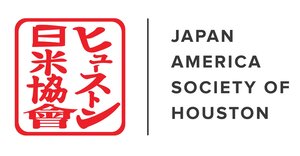Image provided by Tsukuba University
The School of Art & Design at Tsukuba University is hosting the 9th Art Writer Award for High School Students contest. This competition allows students to develop the ability to convey their ideas and thoughts about art in their own words through a 1000-word essay.
The contest will be held over the course of two (2) years and is divided into two (2) categories: English essays and Japanese essays. Essays in English will be collected and judged in 2020 and essays in Japanese in 2021.
The essay topics for this year are:
Japanese Art
Write about Japanese art.Creative Experience
Write about a personal experience creating an art work.Art and Life 2020
Write about art and life in contemporary worldwide situations.
ELIGIBILITY
To be eligible, applicants must:
Be high school students or students attending a public institution equivalent to an upper secondary school (in Japan, mostly ages ranging from 15 to 18 years old) at the time of the application.
ESSAY REQUIREMENTS & HINTS
The essay must be written by the individual.
The essay must have a title.
Students may think and write logically about the topic like a short thesis.
Students may talk about personal feelings as one might when reminiscing.
Students may also focus on reporting a topic in a journalistic style.
Please note: Although “Art” will be assumed to describe visual arts focused on art and design, the essay writer is free to define art according to his or her own view.
THINGS TO KEEP IN MIND WHEN WRITING THE ESSAY
Title and Other Information
Fill in the file name (applicant's last name_first name), country, school name, title of the essay and the applicant’s name at the top of the essay.
Main Text
Applicants may use sub-headers throughout the main text if necessary.
Quotes and References
If quoting the thoughts or words of another person, use double quotation marks around the text (“ ”) and clarify within the body of the essay who the author is.
For example: McClellan stated, “Art museums have never been more popular” (McClellan 2008, 1). (Author’s surname, publication year, quoted pages).
Make a list of references and place it after the essay.
From a book:
McClellan, Andrew. 2008. The Art Museum from Bullée to Bilbao. Berkeley and Los Angeles: University of California Press.
(Author's surname, first name. Publication year. Title of book. Location: Publisher.)
From a journal article:
Ashton, Alex. 2016. “Drawing on Philosophy – An Investigation of Theory in Praxis.” International Journal of Education Through Art, 12: 271-289.
(Author's surname, first name. Publication year. “Article title.” Journal title, volume number: page numbers.)
From the internet:
School of Art and Design. 2019. “History of the School of Art and Design.” Accessed April 1, 2019. http://www.geijutsu.tsukuba.ac.jp.
(Author's name. Publication year. “Article title.”Accessed date. URL)
Make a list of figures and place it after the essay.
If you quote images from a book or other materials, list the reference as shown below:
Figure 1. A page from the instruction book for professional painters. Hokusai Katsushika, Ehon Saishikitsu, 1848, 54-55.(Title of the image. Author’s name, Book title, publication year, page numbers)
If you show images of your art work, list them as below:
Figure 2. Alex Ashton, Untitled; a drawing from my sketchbook, 2020. Photo by the author.(Artist’s name, Title of the work, year of creation. The photographer’s name, etc.)
These examples use Chicago Manual of Style. Other standard styles, such as The Modern Language Association (MLA), are acceptable.
The list of reference materials is not included in the word count.
Pictures and Photographs
Show as many of the images and art works you refer to in the essay as possible.
However, rather than pasting lots of images at once in the essay, try to effectively place necessary images throughout the essay in a way that ensures things can easily be seen.Directly paste the images within the essay file, and use the “text wrap” setting within Word so that the images and text do not end up on top of each other.
If any artistic works are used in the essay, provide a brief explanation of the work in parentheses (Artist’s name, Title of work, size, materials used, technique used, year of creation, place housing the work, etc.) in the body of the essay. Alternatively, you can provide these explanation as a caption below the image.
For example, put text in a textbox and place it below the image.
Then, use the grouping function in Word to group the text and image together.
This makes the layout easier to maintain.
If more than one image is placed within the essay, add a number to the caption for the picture in the chronological order that it appears, such as Figure 1.
Note that if the contest hosts decide to publicly display a submitted essay, the work may be presented with images removed for copyright reasons.
HOW TO APPLY:
Write your essay using the Template file - download [here].
Save the file for the essay using the applicant’s name in English (last name_first name).
For example, Mr. Pablo Picasso’s essay would be “picasso_pablo.docx”.
Only documents submitted in “.docx” or“.doc” Microsoft Word formats will be accepted.Fill out the online application [here].
You can save and resume your progress by clicking “Save” at the bottom of the form.Attach your essay file by clicking “Upload." Check that you have filled all the items and click “Submit” at the bottom of the form.
The message “Your application was submitted.” will be shown. You will receive an e-mail notifying you that your submission has been completed.
Applications are being accepted online through September 30, 2020.
For additional details, please click on the link below:
http://www.geijutsu.tsukuba.ac.jp/~awa/
SUPPORTING ORGANIZATIONS
Hosted by:
School of Art and Design, University of Tsukuba
Endorsed by:
Ibaraki Prefecture
National Association of Art and Craft Education in High School
International Society for Education Through Art – InSEA
Directed by:
Art Environment Support
University of Tsukuba Social Contribution Project
With Cooperation from:
Turner Color Inc.



